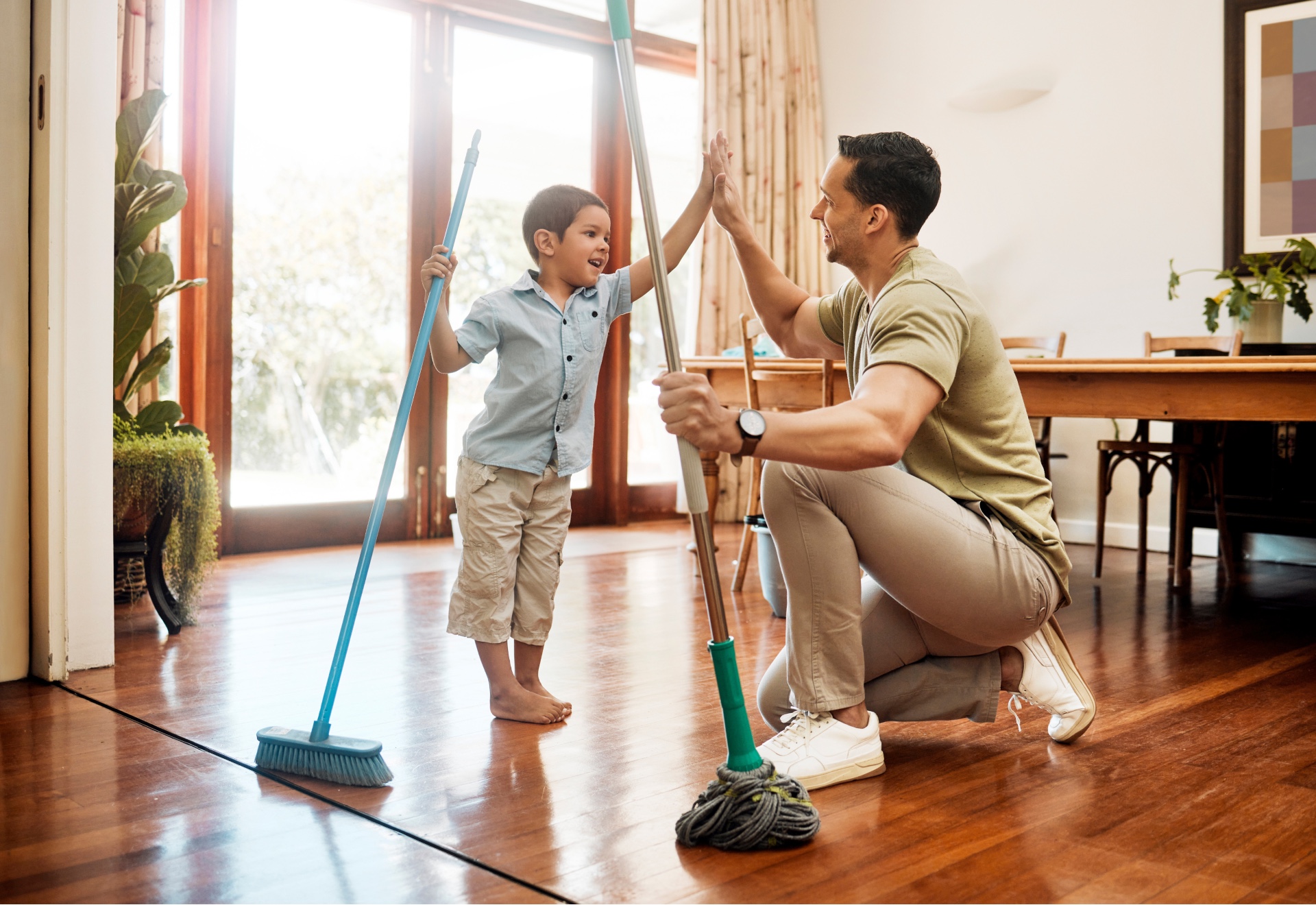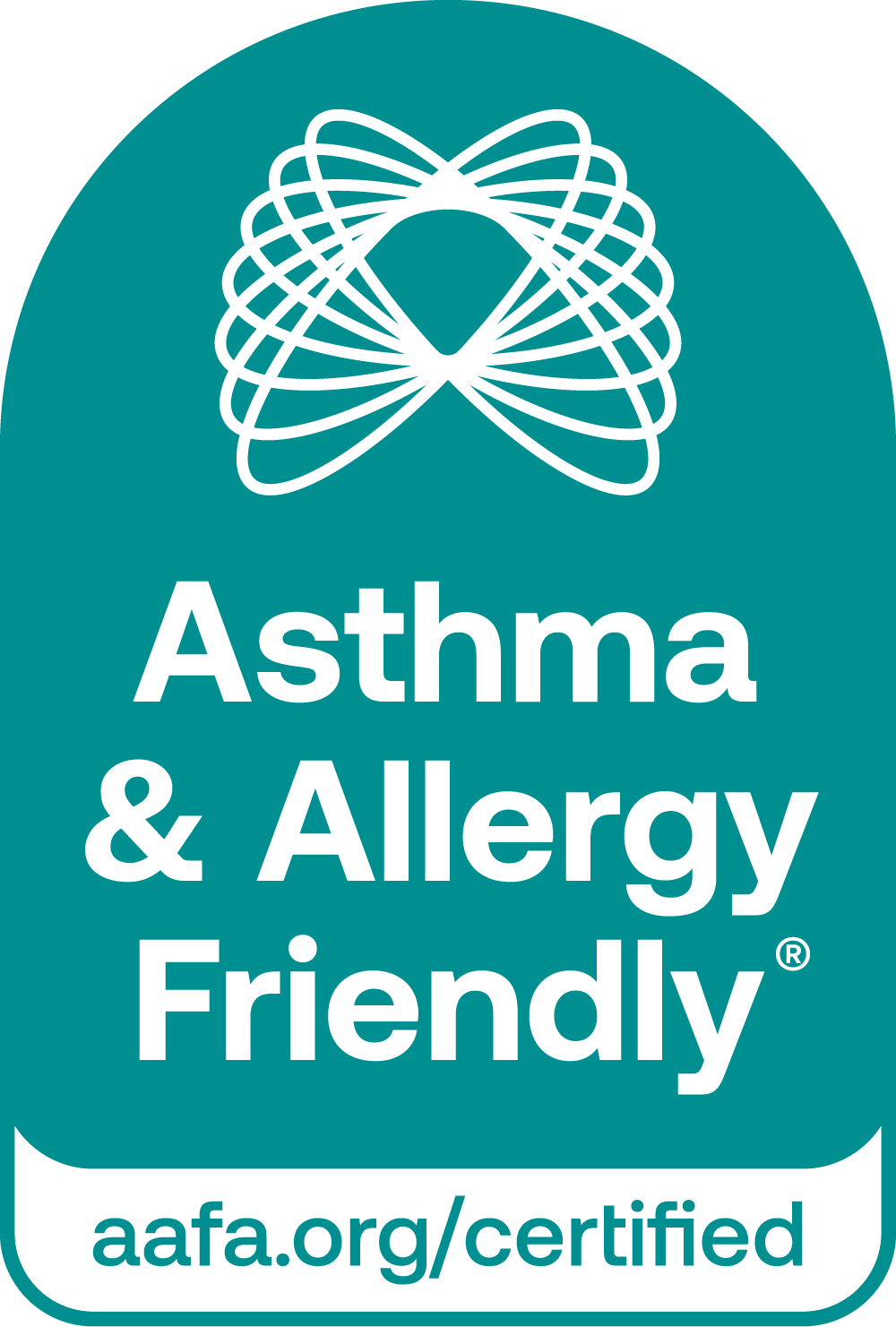Why Spring Cleaning Is About More Than Just Tidiness
As winter gives way to spring, many of us feel a natural urge to clean, declutter, and refresh our living spaces. This annual ritual might feel instinctive – and science suggests that it is. But beyond the satisfaction of sparkling countertops and freshly aired rooms, spring cleaning has real health implications, particularly for people with asthma and allergies.
Dust mite allergen, mold spores, pet dander, other allergens and VOCs build up over the colder months when windows are closed and ventilation is limited. Spring is the perfect time to tackle this hidden buildup – and doing it right can dramatically improve your indoor air quality.
And that’s where science meets tradition.

The Health Case for Spring Cleaning
The average home collects a surprising amount of allergens over the winter. Soft furnishings, bedding, and carpets can harbor everything from pollen to dust mites. If not addressed, these can worsen symptoms for those with respiratory sensitivities.
Spring cleaning helps to:
-
Reduce allergen reservoirs in upholstery, bedding, and rugs
-
Lower airborne particulate levels by ventilating and vacuuming
-
Remove mold growth caused by damp, winter conditions
-
Improve indoor air quality, especially when using products that meet strict third-party criteria
The key is to clean smart.
What Makes Cleaning “Asthma & Allergy Friendly”?
Traditional cleaning practices can sometimes do more harm than good. Harsh chemicals, scented sprays, or poor vacuum filters can stir up allergens and irritants rather than remove them.
That’s why products Certified Asthma & Allergy Friendly® are designed to support a healthier indoor environment. They are tested in accredited laboratories to ensure they:
-
Remove allergen particles effectively (not just redistribute them)
-
Contain minimal potentially harmful VOCs (volatile organic compounds)
-
Can be washed or maintained in ways that support allergen control
Whether it’s a vacuum cleaner, laundry detergent, air filter, or bedding, Certified products provide peace of mind for those managing asthma or allergies.
Where the Urge to Clean Comes From?
So why do we suddenly feel like deep cleaning as the days get longer?
There’s a biological explanation. As sunlight increases, the pineal gland in our brain reduces production of melatonin – the hormone that regulates sleepiness. This hormonal shift leads to increased energy and alertness, helping to shake off the sluggishness of winter.
In other words, your body may be biologically primed to get things done in spring – including tackling those neglected corners of the house.
And with more daylight streaming in, we literally see the dust that may have gone unnoticed all winter.
Cultural Spring Cleaning: A Shared Global Ritual
The impulse to clean house in spring isn’t unique to modern Western culture: it’s a centuries-old, global tradition that blends spirituality, symbolism, and seasonal change.
Chinese New Year: Sweeping Out Misfortune
In Chinese culture, homes are cleaned from top to bottom before the New Year to sweep away bad luck and make room for good fortune. Afterward, cleaning is avoided for a few days to prevent sweeping the luck away.
Jewish Passover: The Hunt for Chametz
Before Passover, Jewish families thoroughly clean their homes to remove all traces of leavened bread (chametz), in memory of the haste in which the Israelites left Egypt. The ritual is both physical and symbolic, a cleansing of the home and spirit.
Nowruz: “Shaking the House” in Persian Culture
During the Persian New Year, which falls on the spring equinox, families practice khooneh takouni, literally “shaking the house.” It’s a two-week-long deep clean, followed by decorating with flowers and wearing new clothes to welcome the season.
Christian and Orthodox Traditions: Preparing for Easter
In Catholic and Orthodox traditions, spring cleaning coincides with Lent and Holy Week. Homes and churches are cleaned as part of spiritual preparation for Easter. The Orthodox “Clean Week” combines fasting with both physical and spiritual purification.
From Jerusalem to Beijing, these traditions reflect a shared understanding that cleansing the space around us is also a way to cleanse the mind and body.
Modern Spring Cleaning Tips, With Asthma & Allergies in Mind
Cleaning for health means going beyond appearances. Here are some evidence-based tips for an asthma and allergy friendly spring clean:
1. Start with Certified Tools
Use a vacuum with a HEPA filter that’s Certified Asthma & Allergy Friendly®. These remove allergens from carpets and floors without blowing particles back into the air.
2. Wash Bedding Weekly in Hot Water
Hot water (130°F/54°C or higher) kills dust mites. Certified mattress and pillow covers can also help reduce exposure.
3. Avoid Scented Cleaning Products
Products that have been tested for low VOC emissions are ideal. Look for third-party certification to be sure.
4. Ventilate While You Clean
Open windows. If pollen is a concern, clean early in the day before levels peak or consider a window-mounted pollen screen.
5. Don’t Forget Soft Surfaces
Rugs, curtains, and upholstered furniture are major allergen reservoirs, so vacuum these too. Steam cleaning or laundering where possible can make a big difference.
A Fresh Start Backed by Science
At its heart, spring cleaning is about renewal. It’s a way of marking a new season, taking control of your environment, and creating space for what matters.
And thanks to modern research, smart strategies, and Certified Asthma & Allergy Friendly® products, this age-old tradition is now more powerful, and more meaningful, than ever.
But if you have days when you feel overwhelmed, and cleaning seems like too big a job, think of actress Phyllis Diller who once joked,
“If your house is really a mess and a stranger comes to the door, greet them with, ‘Who could have done this? We have no enemies.’”
